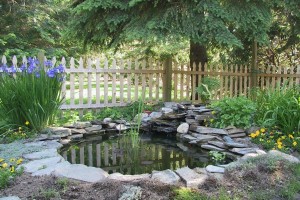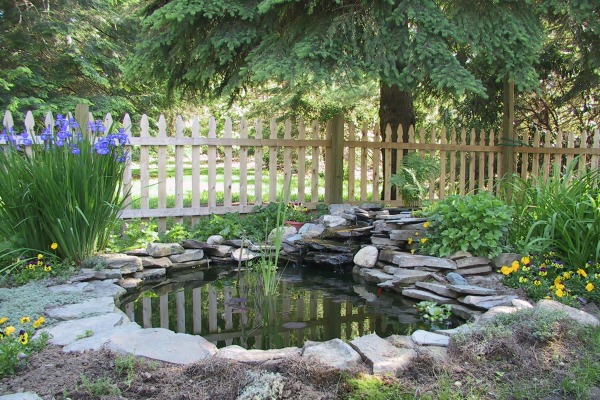Contents
5 Simple But Effective Pond Service and Maintenance Tips
A 
From servicing your pond based on the season to feeding the fish, taking care of your pond will improve its looks and create a much more pleasant environment.
Below, we’ve listed five simple but effective pond service and maintenance tips that you can use to keep your pond clean, healthy and looking its best in any season, from a freezing cold winter to the warmest of summer days.
Use AlgaeFix to manage algae, not chlorine
One of the most common pond service and maintenance mistakes is using chlorine to remove algae from your pond instead of a safe, algae-specific product.
While chlorine will remove algae from your phone, it can also do a massive amount of damage to your pond’s delicate eco-system. Chlorine is poisonous, and when used in a large quantity it can seriously affect the animals that live in and drink from your pond.
First of all, chlorine is often unsafe for the fish that live in your pond, even in small quantities. It’s also extremely dangerous for the birds that bathe in and drink from your pond, with even a small amount of chlorine more than enough to kill most small birds.
Instead of using chlorine to control algae in your pond, use a fish and bird safe product such as AlgaeFix, which is far less likely to cause health problems for the animals that live in or depend on your pond as a source of drinking water.
Use fertilizer tablets to help lilies and other plants grow
If you have lilies in your pond, you’ll want to fertilize them regularly using fertilizer tablets. This type of fertilizer helps the plants you want inside your pond to grow, without causing damage to the pond’s water.
Remember that each plant has a different fertilizer schedule. Lilies, for example, usually need to be fertilized more often than marginals.
As a general rule, it’s best not to use liquid fertilizer to fuel the growth of pond plants. Most liquid fertilizers can interact with the water in your pond and quickly cause it to turn green, which isn’t a good look.
Remove leaves and other debris during fall
During fall, decaying leaves and other foliage can fall into your pond from the surrounding trees and bushes. These leaves can pose a major risk to the fish that live in your pond, as leaves are a major source of harmful gases and toxins.
Fall is one of the most important seasons for pond care. Stay on top of your pond and remove any leaves, branches and other foliage that falls into the water to make sure your fish are safe and free of environmental threats.
Consider using a pond net throughout the fall
One easy way to simplify your pond maintenance is to install protective netting over your pond towards the end of summer. This way, when fall begins, you’ll be able to remove fallen leaves from your pond by rolling up the net instead of collecting them from the pond water.
It doesn’t take long for leaves to decay and become a source of environmental toxins for your pond’s residents. Using a protective net lets you take preventative action and stop problems from occurring in the first place, instead of racing to solve them after they occur.
Feed your fish based on the season
Did you know that many fish need to eat less in winter than in summer? During winter, the low temperature of pond water can slow the metabolism of many dish, meaning they need a lower amount of food in order to live and maintain their health.
Many fish collect fat during spring and summer, then live off the fat throughout the cold months of winter. If your fish have seasonal weight changes, make sure you feed them on a schedule that supports their health and well-being.
